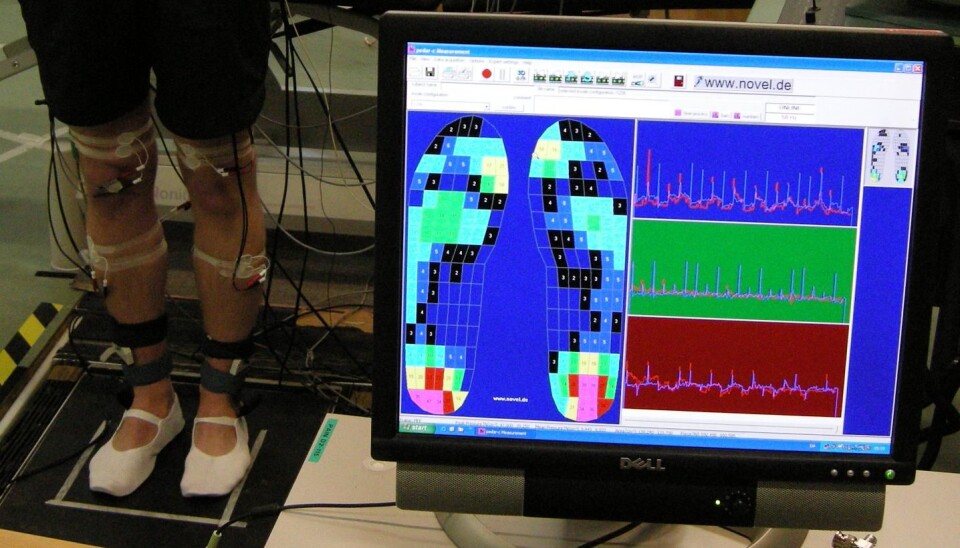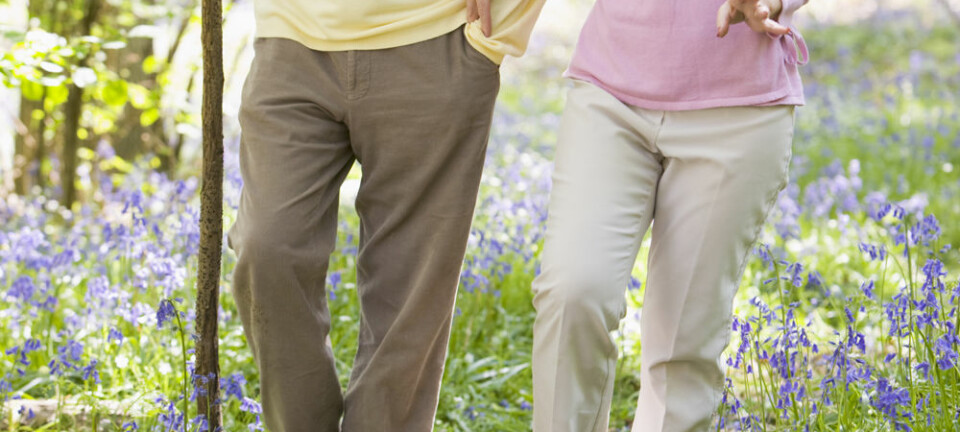
Leg pain weakens sense of balance
New study could explain why so many elderly people either die or get seriously injured from fall accidents.
An old lady falls in her care home. For years she’s had pains in her legs and knees, and when she gets out of balance she falls to the floor and breaks her hip. Six months later she dies as a consequence of the hip fracture.
This is a common scenario for the many elderly people who are hospitalised after fall accidents. And although not everyone dies from the accident, the fall could lead to diseases and a loss of mobility.
Researchers from Aalborg University’s Center for Sensory-Motor Interaction have studied the general reasons to why we fall.
Pain and poor balance go hand in hand
It has long been known that a worn-down knee, for instance, can impair balance.
But the Danish study is the first one to prove that pain in itself makes the balance worse. This could function as an even stronger incentive to put old people into pain treatment.
The researchers placed elderly people with and without pain in their legs on a moveable force platform that measures how much a person sways. That way it can determine how strong their sense of balance is.
“While they were trying to deal with the unexpected surface changes, we measured muscle activation patterns, joint positions and body sway in people with and without pain in the leg and knee. Our study showed that the pain weakens the body’s sense of balance,” says Professor Thomas Graven-Nielsen.
Knee pain is worst for balance
The researcher explains that the brain coordinates the various muscles in the body, so they create a backlash on external impacts. But if the backlash comes too late, the person loses their balance, which can result in a fall.
If the muscles that counteract the external impact are in pain, it results in a change in the control signals sent out to the muscles that control our balance.
Since elderly people frequently suffer from pain in the legs, this could explain why they feature so heavily in statistics about fall accidents.
When a region of the body that’s in pain cannot prevent a fall, other muscles take over. But this still impairs our ability to remain standing on our feet.
The study also shows that the knee joint is important for our balance. The closer the pain is to the knee, the worse the balance both before and after the influence of an unexpected impact.
Fewer pains to minimise the risk of falling
Graven-Nielsen says that previous studies have focused mainly on younger people.
“It’s hard to find elderly people without pain in their lower limbs, but will try in the future.”
Several other studies have highlighted the importance of keeping patients free from pain, either through medication or rehabilitation.
If an elderly person has fallen once, there is a great risk that he or she will fall again. This is partly because the risk increases with age, and partly because the pain from a previous incident makes it harder to maintain the balance.
--------------------------
Read this story in Danish at videnskab.dk
Translated by: Dann Vinther
Scientific links
- Experimental knee pain impairs postural stability during quiet stance but not after perturbations; European Journal of Applied Physiology; DOI: 10.1007/s00421-011-2226-3
- Experimental Muscle Pain Challenges the Postural Stability During Quiet Stance (...)"; Journal of Pain; doi:10.1016/j.jpain.2011.02.356Experimental Muscle Pain Challenges the Postural Stability During Quiet Stance and Unexpected Posture Perturbation
- Experimental calf muscle pain attenuates the postural stability during quiet stance and perturbation; Clinical Biomechanics; doi:10.1016/j.clinbiomech.2010.06.001







